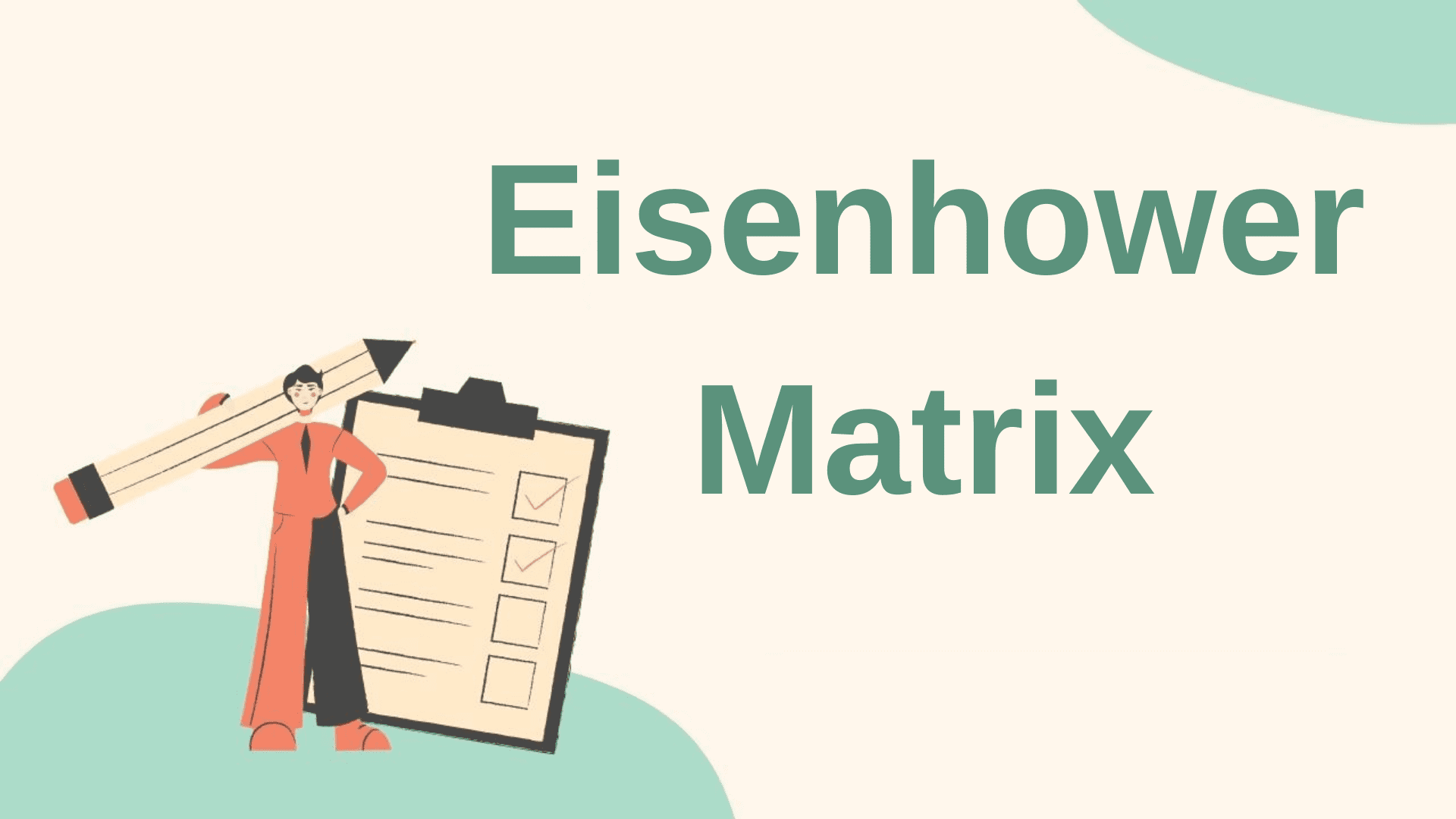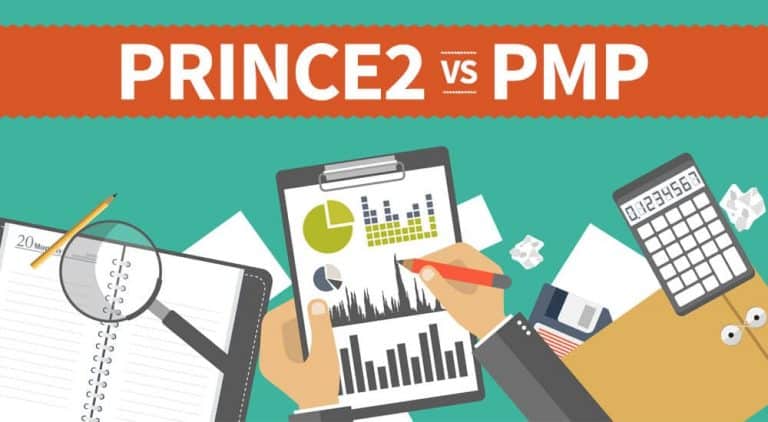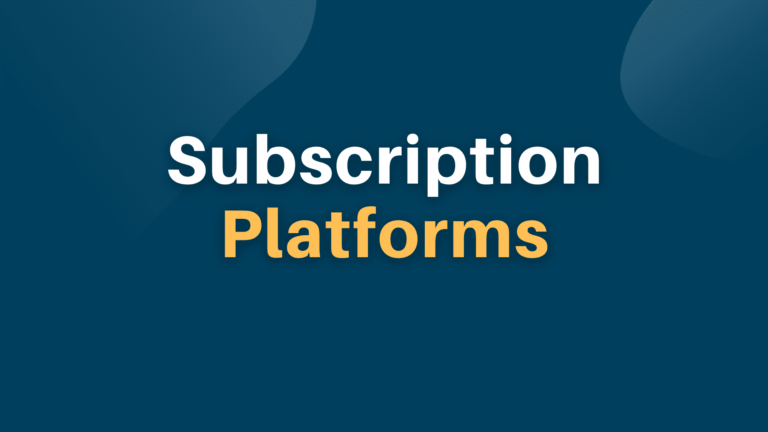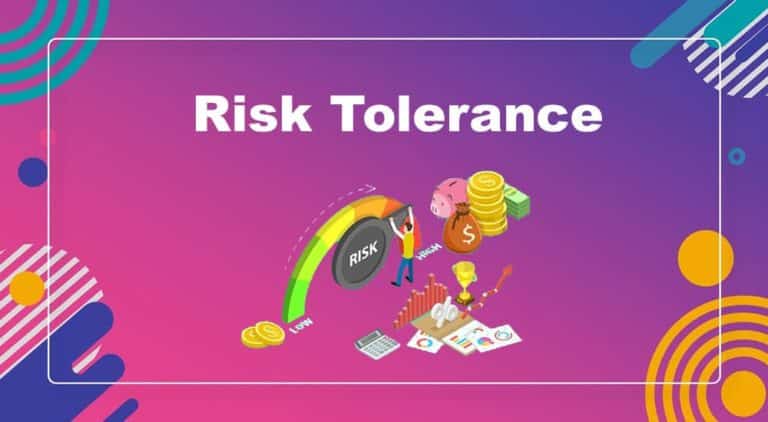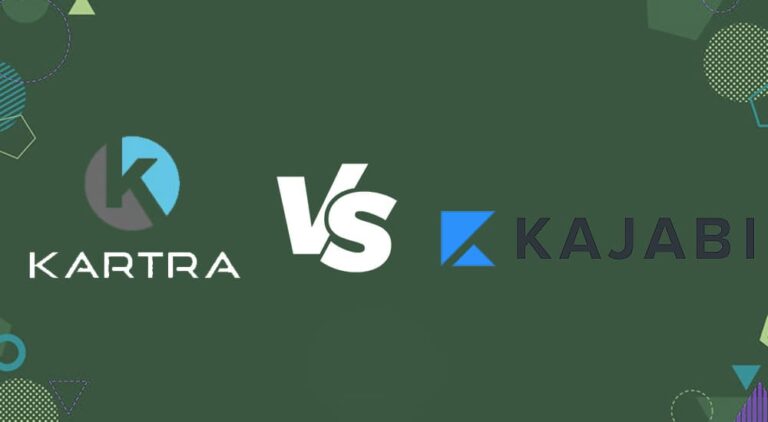An Eisenhower Matrix management tool prioritizes tasks based on urgency or importance.
It was named after former US President Dwight D. Eisenhower’s remark: “I have two types of problems: urgent and important. The important ones are never urgent, and the urgent ones are never important.”
Dwight D. Eisenhower was the 34th President of the United States. He was a five-star general in the United States Army and served as the Supreme Commander of the Allied Forces in Europe during World War II.
Stephen Covey, the author of The 7 Habits of Highly Effective People, took Eisenhower’s words and developed this task management tool, or Eisenhower Matrix. The Eisenhower Matrix is also known as the time management matrix, the Eisenhower Box, the Urgent/Important matrix, the Eisenhower Decision Matrix, the urgent-important matrix, etc.
President Dwight D. Eisenhower realized that successful time management balances time between urgent and important responsibilities. Knowing how to manage time can help with productivity at work and explore possibilities for advancement efficiently.
This task management tool has four quadrants to prioritize and separate urgent tasks from non-urgent tasks and important tasks from non-important tasks:
- Urgent + Important.
- Not Urgent + Important.
- Urgent + Not Important.
- Not Urgent + Not Important.
An example of the Eisenhower matrix template is below:
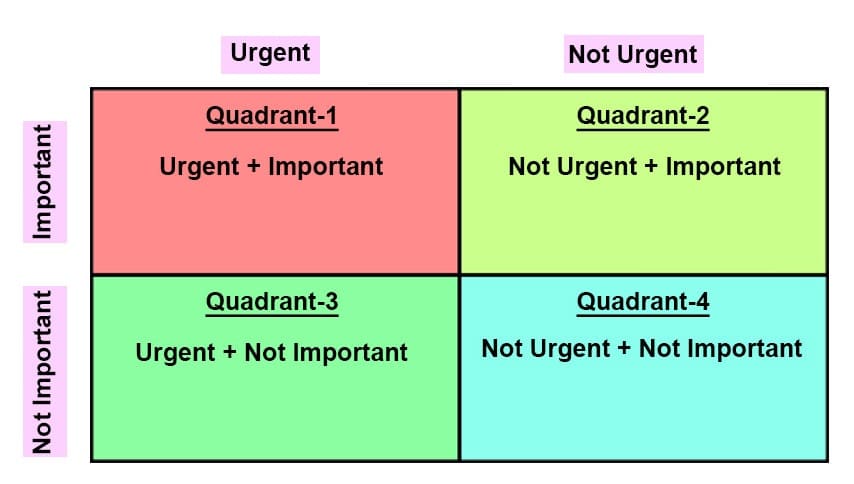
Why Use the Eisenhower Matrix?
It is difficult to complete a job if you consistently miss deadlines, and essential items can pile up unattended. Learning how to handle the influx of duties while producing exceptional results is imperative. The Eisenhower Matrix is a useful tool for organizing priorities.
The Eisenhower Matrix is useful for the workplace and in personal life. For example, a worker may receive a private phone call that appears urgent but unimportant. Tasks must fall within the suitable quadrant for this technique to be effective.
Although the Eisenhower Matrix is for prioritizing, it can also help determine how individuals or teams should spend their time.
How to Use the Eisenhower Matrix?
The matrix has four quadrants. You can assess the relevance and urgency of tasks and place them in the appropriate quadrants. Do, schedule, delegate, or eliminate is the call to action for each quadrant. Each quadrant is given its priority level: activities in Quadrant 1 should be first, while those in Quadrant 4 you can complete last or remove it.
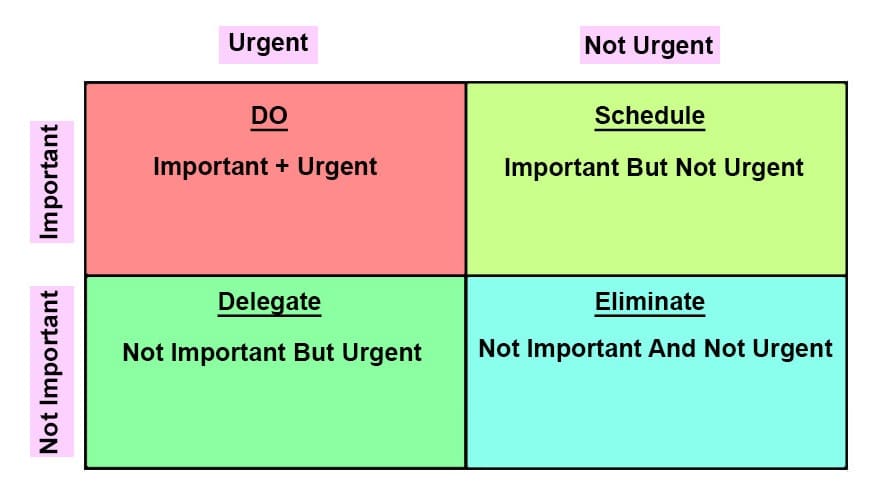
First Quadrant: Important and Urgent (Do First)
These jobs are urgent and important that require immediate attention and action. Quadrant 1 tasks are the highest priority category with specific deadlines; poor job quality or failure to achieve the deadline has consequences.
The upper left corner is the first quadrant.
Tasks in Quadrant 1 can include:
- Putting a stop to a company-wide IT outage.
- Putting together a speech or report for a crucial meeting.
- Create a blog entry for tomorrow.
- Complete a project proposal.
- Respond to emails from clients.
Second Quadrant: Important But Not Urgent (Schedule It)
These are essential but not urgent jobs. They may or may not have set deadlines, but they are important for long-term goals. Proactively managing activities in this quadrant can assist you in alleviating the pressure on quadrant one duties. Also, you should prioritize Quadrant 2 duties second only to Quadrant 1 activities.
The upper right quadrant is the second quadrant.
Tasks in Quadrant 2 can include:
- Participate in networking events like attending business meetings, conferences, or seminars.
- Finishing staff performance evaluations.
- Enroll in a professional development course.
- Make enhancements to a personal project.
Third Quadrant: Urgent But Not Important (Delegate It)
These are critical but unimportant jobs. Even though the activities are time-sensitive, they do not contribute heavily to long-term objectives. Here, differentiation between importance and urgency is needed. Tasks in this quadrant are typically seen as “busy work,” although they may be assigned without much difficulty. The third most important job is assigned to the third quadrant.
The lower left quadrant is the third quadrant.
Tasks in Quadrant 3 can include:
- Attending non-essential meetings.
- Completing little paperwork.
- Completing administrative activities.
- Post blog entries.
- Meeting transcription.
- Responding to non-client emails.
Fourth Quadrant: Not Important and Not Urgent (Eliminate or Do Last)
These are not urgent or significant duties. Tasks in this quadrant are unnecessary and add nothing to long-term objectives or interests. These tasks are last or eliminated, as they are the lowest priority group.
The lower right quadrant is the fourth quadrant.
Activities in Quadrant 4 can include:
- Cleaning up spam emails.
- Looking through LinkedIn.
- File organization.
- Participating in a status meeting.
- Sharing permissions for status.
The Urgent/Important Matrix may be a great place to start prioritizing work in project management. After assigning chores to the proper quadrant, you can establish time management methods to assist in dealing with key activities on time. For example, utilizing Dropbox to manage a to-do list better and create a timeline template.
These task management solutions allow you to allocate urgent, non-urgent work to other team members and establish deadlines and reminders for important, non-urgent activities that you can schedule later.
You can also use automation solutions. For example, automation helps deal with repetitive tasks. Using automation tools, you can also assign tasks in the third quadrant (urgent but not critical) time-efficiently for the organization.
Automation can assist you in eliminating time-consuming, error-prone processes that can cause bottlenecks in the future, allowing team members to work more productively.
Combining the Eisenhower Box with other time management techniques can yield better results. Eat the Frog, for example. Eat the Frog is based on Mark Twain’s quote, “If it’s your job to eat a frog, do it first thing in the morning.”
This entails doing the most complicated work in a corporate environment before moving on to smaller projects that you can prioritize on other considerations, such as deadlines.
There is also the ABCDE approach, in which users take their jobs and assign them a letter value depending on priority before finishing them in that order.
Advantages of the Eisenhower Matrix
It is a Simple Tool
Unlike other productivity methods, scheduling time using the Eisenhower Matrix does not necessitate using fancy applications or software. Instead, all that is needed is a pen, paper, and a list of pending tasks.
It is Easy to Use
The Eisenhower Matrix’s strength resides in its simplicity. It does not require any special skills. The Eisenhower Matrix is easy to use, and you can arrange and prioritize your duties.
Changes or Modifications are Fast
Updating, modifying, and changing this task management tool is quick and efficient.
Simple to Organize
Task prioritization is simple and takes less time to organize. It saves time wasting unnecessary tasks.
Provides a Summary of What Must Be Done
The Eisenhower Matrix provides a greater overview of responsibilities than most productivity solutions. You can see the summary of urgent and important tasks.
Disadvantages of the Eisenhower Matrix
It Is Not Suitable Dynamic Work Environment
Users may presume that most jobs are static while using the Eisenhower Matrix.
Constantly shifting priorities and adding chores that change frequently might throw off planning and time management. As a result, adopting the Eisenhower Matrix in a continuously evolving workplace may not be sustainable.
Some May Find It Overly Simplistic
The Eisenhower Matrix is commended for its simplicity, yet a drawback exists. Because certain obligations extend outside the matrix – and some are in-betweens – not everyone might sit down and delegate work in four separate categories.
Most People May Find It Excessively Regimented
While most people may find structured workflows appealing, some people do not. The Eisenhower Matrix serves the same purpose. Many individuals find the matrix useful since it makes them more productive. Conversely, people regard it as a mental construct and believe they would be better off not using it.
Practical Eisenhower Matrix Examples
The below example shows how an Eisenhower Matrix functions in different situations:
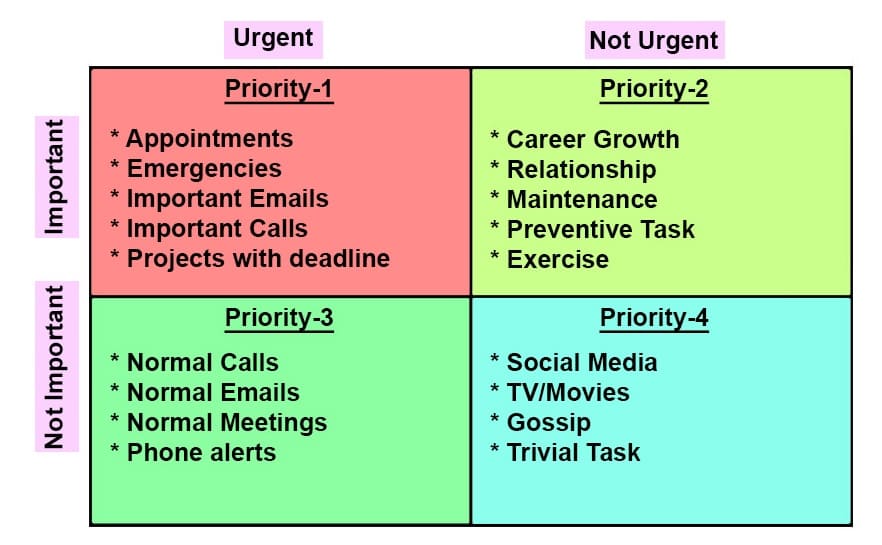
Product Manager
Product owners are at the crossroads of achieving the product vision based on business goals. They succeed when the product development team has all information they need to go forward.
The Eisenhower Matrix may assist product owners in ensuring that they focus on what is most important for the product and the sprint.
Urgent:
- Complete the customer narratives developers are looking for.
- Participate in the daily scrum.
- Obtain approval for a major change request.
Important:
- Backlogging of grooms.
- Set priorities for the upcoming spring.
- Provide status and progress updates to stakeholders.
Delegate:
- Inform sales about new features.
- Produce marketing copy.
- Make/update a test plan.
- User documentation should be updated.
Delete:
- Manage the performance of individual members of the product development team.
- Create or modify code.
- Plan and lead scrum meetings.
Project Manager
Project managers spend time communicating, assigning tasks, and guiding team members on what they should work on. An Eisenhower Matrix indicates what requires their attention and what should be left to others (or no one at all).
Urgent:
- Keep stakeholders informed of project progress.
- Determine the impact of a change request.
- Obtain the missing information that is preventing implementation.
Important:
- Determine resource/skill shortfalls.
- Examine the project budget against the actuals.
- Make it easier to order the equipment/materials/licenses needed to execute tasks.
- Plan usability testing.
Delegate:
- Plan and lead scrum meetings.
- Technical specifications must be written.
- Investigate the technological feasibility.
Delete:
- Create or modify code.
- Hiring technical personnel.
- Plan team-building activities.
Product Director
Product directors must delegate to succeed. They should ensure that the goals, vision, and objectives are obvious to all team members. An Eisenhower Matrix may help them allocate their time to sustain an excellent product team.
Urgent:
- Address a critical consumer problem.
- Total product vision.
- KPIs and metrics should be reported.
- Complete the board meeting slides.
Important:
- Staff mentoring
- Update the master roadmap.
- Analysis of competitors.
- Complete the business case for expanding the product range.
Delegate:
- Participate in the daily scrum(s).
- Make stories of users.
- Backlogging of grooms.
Delete:
- Hold sessions with no agendas or aims.
- Micromanaging employees.
- Obsessing product evaluations or social media remarks.
Conclusion
Eisenhower Matrix is an innovative tool for proficient time management and task prioritization. This technique hinges on discerning tasks based on their significance and immediacy. This matrix is an effective tool for enhancing productivity and an efficient strategy for managing stress and maintaining a balanced lifestyle.

I am Mohammad Fahad Usmani, B.E. PMP, PMI-RMP. I have been blogging on project management topics since 2011. To date, thousands of professionals have passed the PMP exam using my resources.

